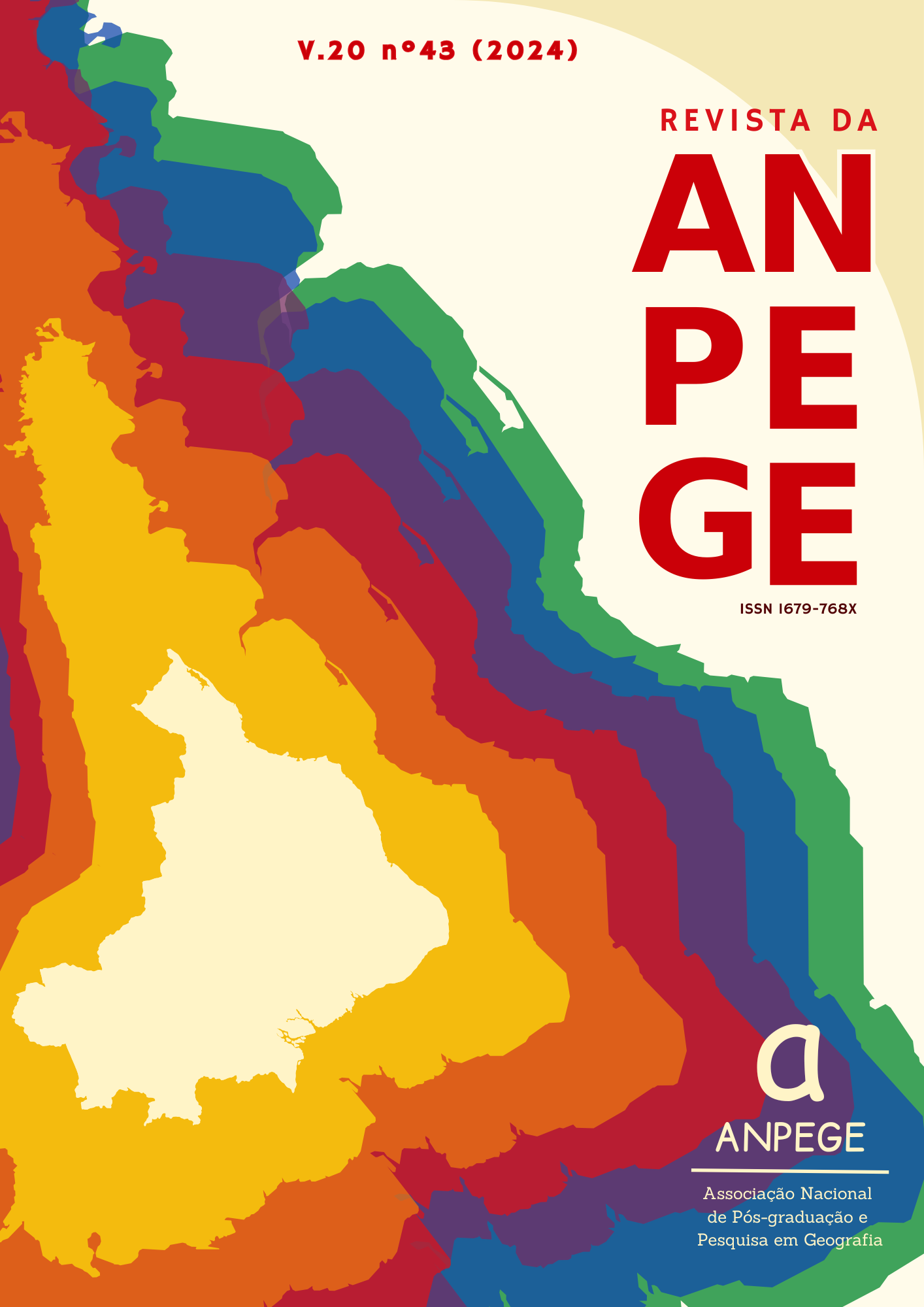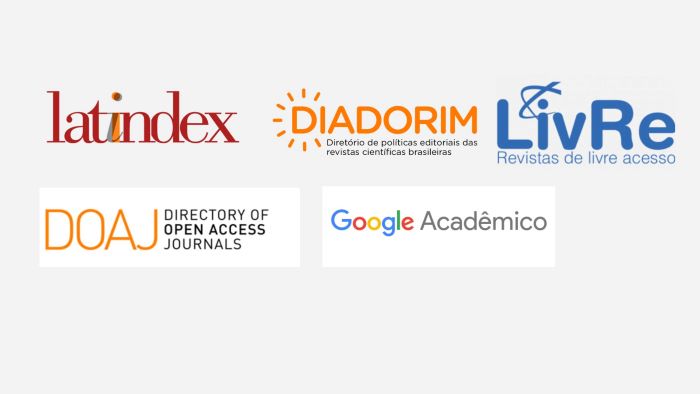El agroecosistema campesino maya q’eqchí, un espacio de vida. Alta Verapaz, Guatemala
DOI:
https://doi.org/10.5418/ra2024.v20i43.19933Palabras clave:
maya q´eqchí, Ecoregión Lachuá, agroecosistemas, manejo local, Alta VerapazResumen
Alta Verapaz es un departamento localizado al norte de Guatemala. Es el segundo departamento más poblado, con una población que supera el millón de habitantes, teniendo como grupo étnico predominante al maya q´eqchí. A pesar de ser una población eminentemente rural, cambios en la tenencia de la tierra y en la gobernanza han acelerado la degradación del territorio. Parte de estas causas fueron motivas por la expansión del agronegocio de la palma aceitera, la cual se consolidó al norte y este del departamento. Sin embargo, existen experiencias como la desarrollada en la Ecoregión Lachuá, que ha permitido a través del manejo de agroecosistemas generar opciones de sustento y reproducción de la vida, a través del cultivo del maíz, el asocio agroforestal del cardamomo, el cacao y los textiles, lo cual se antepone a los proyectos expansivos que fomentan los monocultivos y el desplazamiento poblacional.
Descargas
Citas
AGUIRRE, T, ARNAUD, G Y K. BAYRES. Dinámicas Territoriales en Alta Verapaz. Apuntes para las transiciones agroecológicas. Centro Latinoamericano para el Desarrollo Rural. 2024.
ALARCÓN, P. Etnoecología de los p´urhépecha. Una guía para el análisis de la apropiación de la naturaleza. Red de etnobiología y patrimonio biocultural. México. 2009.
BANCO DE GUATEMALA. ‘Tipo de cambio compra promedio ponderado del mercado institucional de divisas’. Banco de Guatemala. 17 de abril de 2020. Accesado el 17/04/2020.
https://www.banguat.gob.gt/inc/ver.asp?id=/imm/imm02
BOSQUES MODELO. Bosque modelo Lachúa.s.d. Accesado el 20/03/25. En: https://ribm.net/regional-networks/lachua-model-forest/
CONDE, F. (2022). Comunicación personal sobre la situación del cacao en Guatemala.
DARDÓN, B. Cardamomo guatemalteco cumple 101 años de cultivarse en el país. Prensa Libre. 2 de junio de 2015.
https://www.prensalibre.com/efectivo/cardamomo-guatemalteco-cumple-101-aos-de-cultivarse-en-el-pais/ Accesado el 17/04/2020.
FREIRE, P. La educación como práctica de la libertad, Siglo XXI, México. 1971.
FREIRE, P. Cartas para Guinea Bissau. Apuntes de una experiencia pedagógica en proceso. Siglo XXI, México. 1971.
GAMARRO, U. Buena cosecha. Guatemala proyecta ser el segundo productor a nivel latinoamericano, luego de generar 800 mil toneladas. Prensa Libre. 28 de febrero de 2019. Accesado el 21/12/2019
https://www.pressreader.com/guatemala/prensa-libre/20190228/281547997184742
GAMAZO, C. La palma aceitera sigue devastando los bosques del norte de Guatemala. Mongabay Latam. 26 de noviembre 2017. Accesado el 22/12/2019.
https://es.mongabay.com/2017/11/palma-africana-sigue-devastando-bosques-de-guatemala/
GARCÍA CANCLINI, N. Culturas híbridas. Estrategias para entrar y salir de la modernidad. Ciudad de México: Grijalbo.1989.
INE. XII Censo Nacional de Población y VII de vivienda. Resultados del Censo 2018. 2019
Accesado el 22/12/2019.
https://www.censopoblacion.gt/
INSTITUTO NACIONAL DE BOSQUES. Cartilla: Parque Nacional Laguna Lachuá. Guatemala. 2021
MARTIN, G. Etnobotánica: Manual de Métodos, Editorial Nordan Comunidad, Montevideo, Uruguay. 2000
POPENOE, W. Batido and other Guatemalan beverages from cacao. American Antropologist, 21; p. 403-409. 1919.
RAMSAR. Ecoregión Lachuá. 2006. Accesado el 20/03/25
En: https://rsis.ramsar.org/es/ris/1623
ROMA-ARDÓN, R. La evolución de los saberes bioculturales campesinos en la Llanura de los Guatuso, Costa Rica. Etnobiología (1), p. 3-17. 2022.
ROMA-ARDÓN, R., DAMON A.A. Y W. SÁNCHEZ-ORTIZ. El policultivo de cacao (Theobroma cacao L) y la cultura qato´ok de Tuzantán, Chiapas, México: Una aproximación Etnoecológica. Ethnoscientia (4), v.7, p. 14-32. 2022.
ROMA-ARDÓN, R., DAMON A.A. Y W. SÁNCHEZ-ORTIZ. Etnoecología del pueblo qato´ok de Tuazantán, Chiapas. Revista Politécnica de Aguascalientes (1), v.1, p. 16-20. 2023
SANTIAGO A. Economía de muerte en Guatemala: palma de aceite y la transfiguración de las tierras del norte. Avispa Midia. 5 de marzo de 2018. Accesado el 20/12/2019
TOLEDO, V Y BARRERA-BASSOLS, N. La memoria biocultural. La importancia ecológica de las
sabidurías tradicionales, Icaria, Barcelona, España. 2008.
TOLEDO, V, BARRERA-BASSOLS N, GARCÍA FRAPOLLI E, Y P. ALARCÓN. Etnoecología
de los mayas yucatecos. México. 2013.
TOVILLA BORRAZ, C. E., ZAMORA LOMELÍ, C. B., ESTRADA LUGO, E., Y GRACIA, M. A. Artesanía textil, reciprocidad, liderazgo y reproducción social en Zinacantán, Chiapas. Región y sociedad, 33, p. 453. 2021
Descargas
Publicado
Cómo citar
Número
Sección
Licencia
Autores que publicam nesta revista concordam com os seguintes termos:Autores mantêm os direitos autorais e concedem à revista o direito de primeira publicação, com o trabalho simultaneamente licenciado sob a Creative Commons Atribuição-NãoComercial-CompartilhaIgual 3.0 Brasil que permitindo o compartilhamento do trabalho com reconhecimento da autoria do trabalho e publicação inicial nesta revista.
Autores têm autorização para assumir contratos adicionais separadamente, para distribuição não exclusiva da versão do trabalho publicada nesta revista (ex.: publicar em repositório institucional ou como capítulo de livro), com reconhecimento de autoria e publicação inicial nesta revista.
Autores têm permissão e são estimulados a publicar e distribuir seu trabalho online (ex.: em repositórios institucionais ou na sua página pessoal) a qualquer ponto antes ou durante o processo editorial, já que isso pode gerar alterações produtivas, bem como aumentar o impacto e a citação do trabalho publicado (Veja O Efeito do Acesso Livre em http://opcit.eprints.org/oacitation-biblio.html.)
Authors who publish with this journal agree to the following terms:
Authors retain copyrights and grant the Journal the right of first publication with the work simultaneously licensed under a Creative Commons Atribuição-NãoComercial-CompartilhaIgual 3.0 Brasil that allows others to share the work with an acknowledgement of the work's authorship and initial publication in this Journal.
Authors are permitted to enter into separate, additional contractual arrangements for the non-exclusive distribution of the Journal's published version of the work (e.g., post it to an institutional repository or in a book chapter), with an acknowledgement of authorship and initial publication in this journal.
Authors are permitted and encouraged to publish and share their work online (e.g., in institutional repositories or on their website) prior to and during the submission process, as it can lead to productive exchanges, as well as increase the impact and citation of published work (See The Effect of Open Access - http://opcit.eprints.org/oacitation-biblio.html.)




